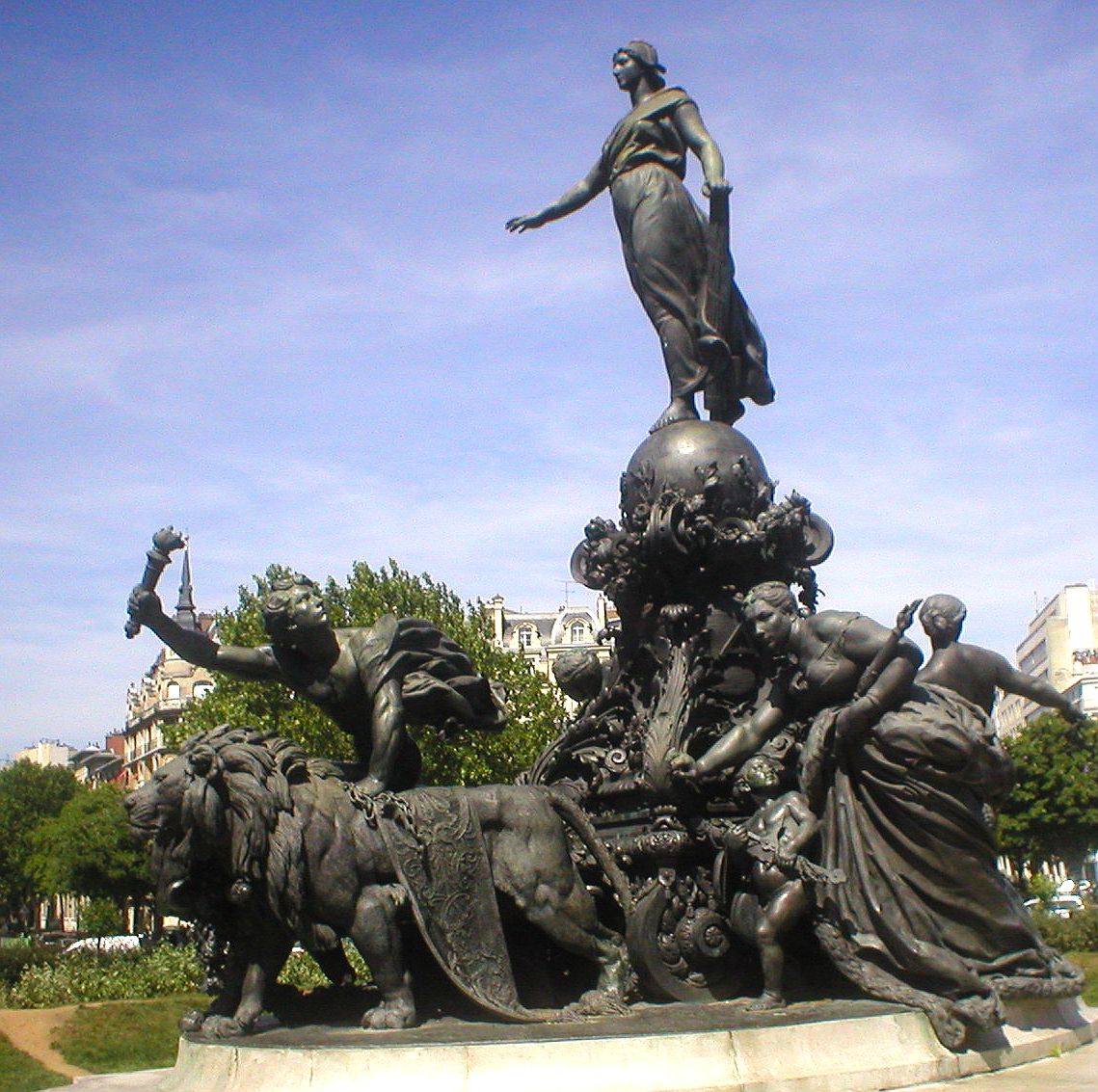- Place de la Nation
Paris streetbox
arr1= 11e, 12e
arr_num = 11e, 12e
streetname= Place de la Nation
paris_
x= 190
y= 108
quarter= Sainte-Marguerite
Picpus
begins= Rue du Faubourg Saint-Antoine
ends= Avenue du Trône
width= 252 m in diameter
length= n/a
creation= Already present on the Delagrive plan (1728 )
denomination=2 July 1880
area_
caption=The monumental group byAimé-Jules DalouThe place de la Nation (formerly the place du Trône then the place du Trône-Renversé) is a square inParis , on the border ofXIe arrondissement andXIIe arrondissement . It was renamed Place de la Nation at the national festivities of 14 July1880 and is served by theParis Metro station Nation.History
Ancien Regime
Whilst the city bears the traces of the
mur des Fermiers généraux built well beyond the buildings of Paris city of Paris in a campaign to encircle houses, gardens and monasteries, its construction left a vast grassy space of vines and market gardens as far as the medieval city wall and the walls of the gardens of the old village of Picpus, filled with major convents, schools and retreats. In this space a throne was set up on 26 July 1660 for the solemn entry into Paris of Louis XIV andMaria Theresa of Spain , arriving in the city fromSaint-Jean-de-Luz after their marriage. This gave the square its original name of place du Trône.Originally in the square were two pavilions and two columns of the
barrière du Trône designed byClaude Nicolas Ledoux and built for the barrier ofoctroi (Mur des Fermiers généraux ) which surrounded the entrance to thecours de Vincennes . The columns are surmounted by statues of kings Philip II and Louis IX.French Revolution
On the Revolution, the square was renamed place du Trône-Renversé after 10 August 1792. In the south half of the square, the most shaded side, near the pavilion of law built by Ledoux and on what is now the site of the magasin Damart, a guillotine was set up. Those guillotined here are buried at
cimetière de Picpus and include:
* André-Marie Chénier, 25 July 1794.
*Cécile Renault ,Henri Admirat andJean-Baptiste Michonis , 17 June 1794.
*Josse-François-Joseph Benaut , composer, 13 July 1794.19th century
The central monument, "The Triumph of the Republic", is a bronze group by sculptor
Aimé-Jules Dalou . It was set up to mark the centenary of theFrench Revolution , at first in plaster in1889 and then in bronze in1899 . A personification of the Republic, looking towardsplace de la Bastille and thus creating a Republican axis still frequently used for popular demonstrations, stands on a globe in a chariot pulled by lions and surrounded by various symbolic figures.20th century
On
22 June 1963 , the magazine "Salut les copains " organised a concert here, with singers such asJohnny Hallyday ,Richard Anthony ,Eddy Mitchell andFrank Alamo . It attracted over 150,000 young people and raised their spirits, with the following day's issue of the journal "Paris-Presse " having the headline "Salut les voyous !". The photographer and friend of many singers,Jean-Marie Périer , photographed the concert. In the same era the place de la Nation was also partially the location for thefoire du Trône before thepelouse de Reuilly .External links
* [http://www.v1.paris.fr/carto/nomenclature/6685.nom.html Official naming of the streets of Paris]
Wikimedia Foundation. 2010.
